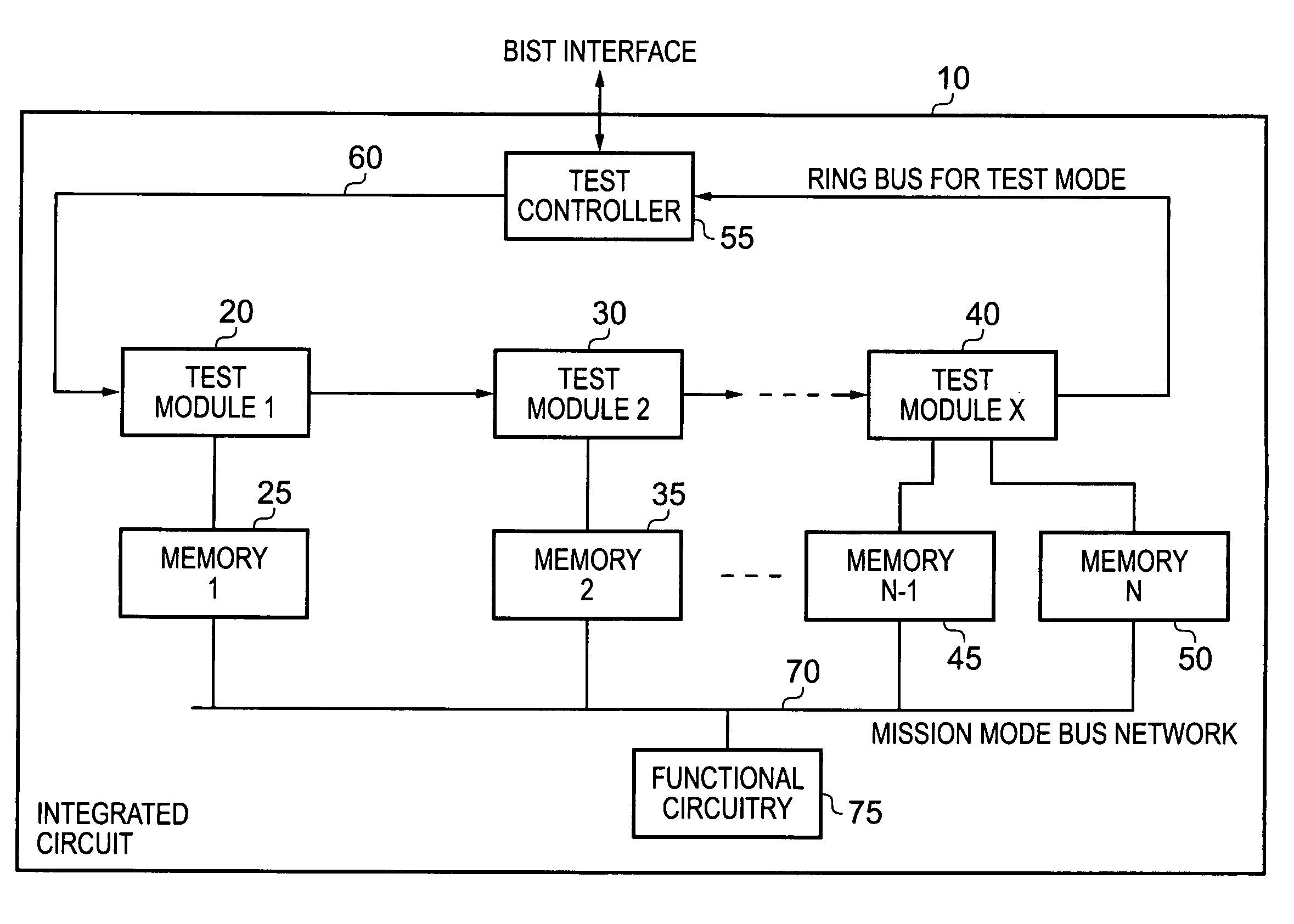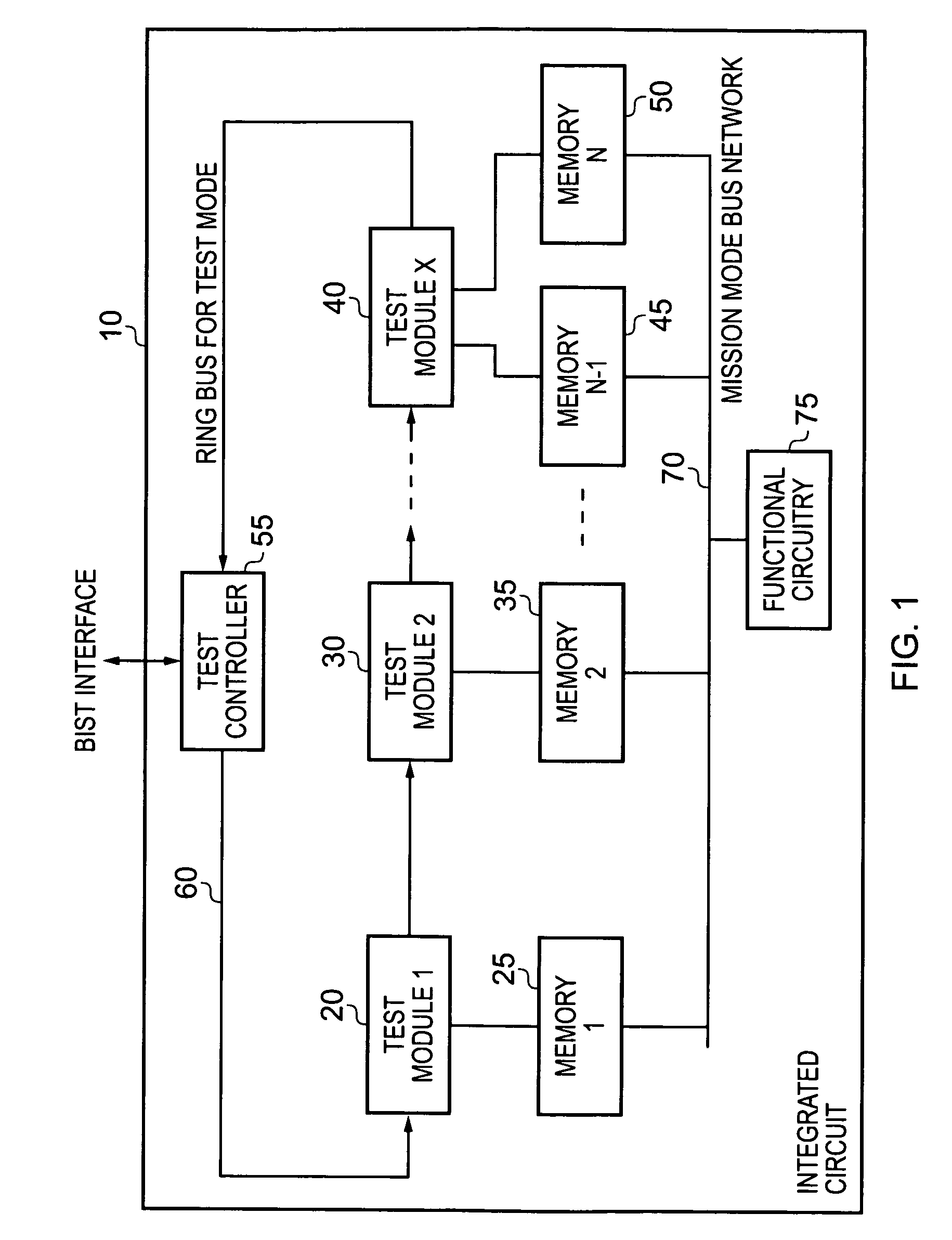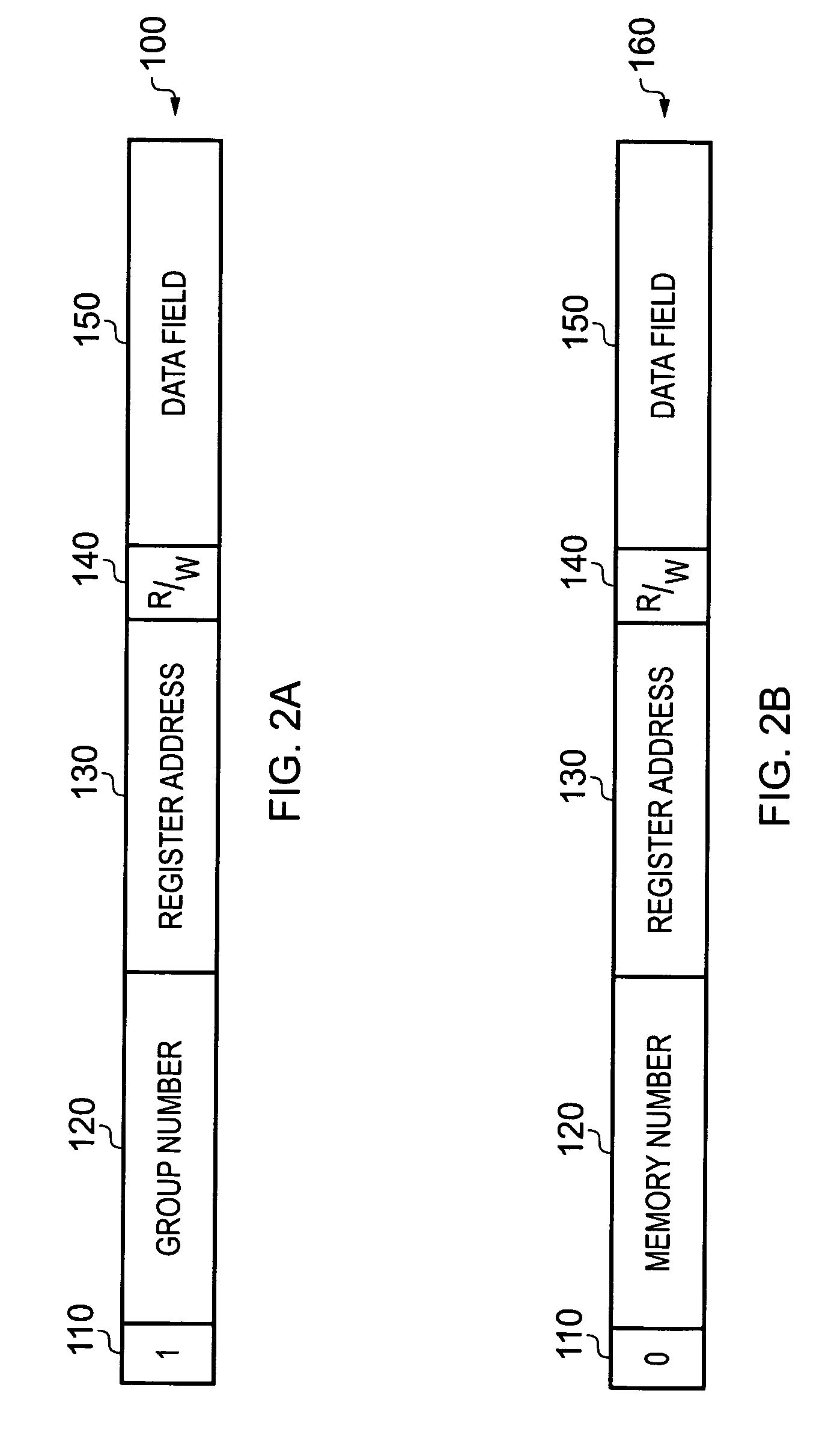Integrated circuit and method for testing memory on the integrated circuit
a technology of integrated circuits and integrated circuits, applied in the direction of electronic circuit testing, static storage, measurement devices, etc., can solve the problems of bringing its own testing problems, externally generated test vector style tests are not suitable for verifying embedded memory arrays, and the time spent in manufacturing tests is exponentially increased
- Summary
- Abstract
- Description
- Claims
- Application Information
AI Technical Summary
Benefits of technology
Problems solved by technology
Method used
Image
Examples
Embodiment Construction
[0061]FIG. 1 is a block diagram of an integrated circuit in accordance with one embodiment. The integrated circuit 10 comprises a plurality of embedded memory units 25, 35, 45, 50 which are used by a number of functional circuits (denoted in FIG. 1 as functional circuitry 75) during a normal mode of operation (also referred to herein as a mission mode). During the mission mode, the various functional circuits 75 will access the associated memory units 25, 35, 45, 50 via a bus network 70. The bus network can take a variety of forms as will be understood by those skilled in the art, but will allow each of the memory units to be accessed by one or more functional circuits during the mission mode of operation to enable read and / or write operations to take place in respect of those memory units.
[0062]As also shown in FIG. 1, a plurality of test modules 20, 30, 40 are provided for use during a test mode of operation to perform test operations in respect of the various memory units 25, 35,...
PUM
 Login to View More
Login to View More Abstract
Description
Claims
Application Information
 Login to View More
Login to View More - R&D
- Intellectual Property
- Life Sciences
- Materials
- Tech Scout
- Unparalleled Data Quality
- Higher Quality Content
- 60% Fewer Hallucinations
Browse by: Latest US Patents, China's latest patents, Technical Efficacy Thesaurus, Application Domain, Technology Topic, Popular Technical Reports.
© 2025 PatSnap. All rights reserved.Legal|Privacy policy|Modern Slavery Act Transparency Statement|Sitemap|About US| Contact US: help@patsnap.com



